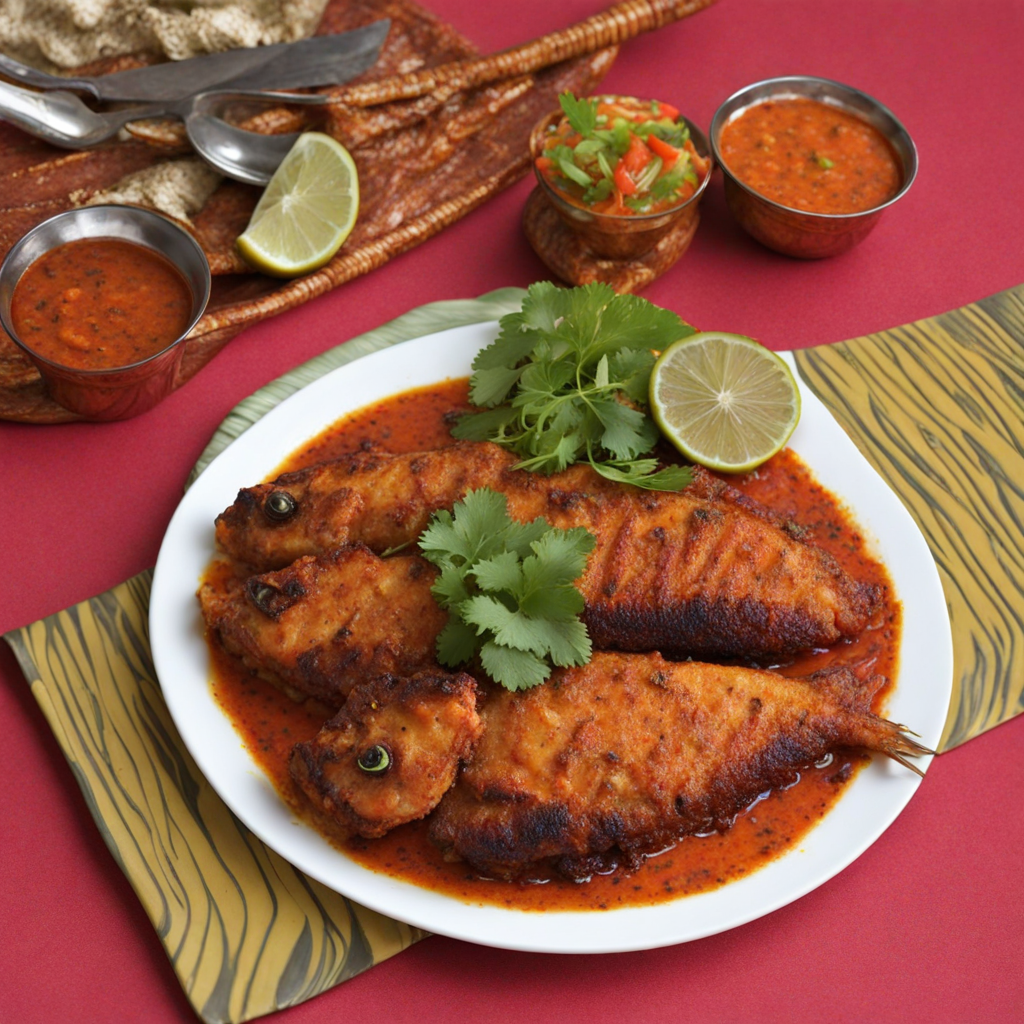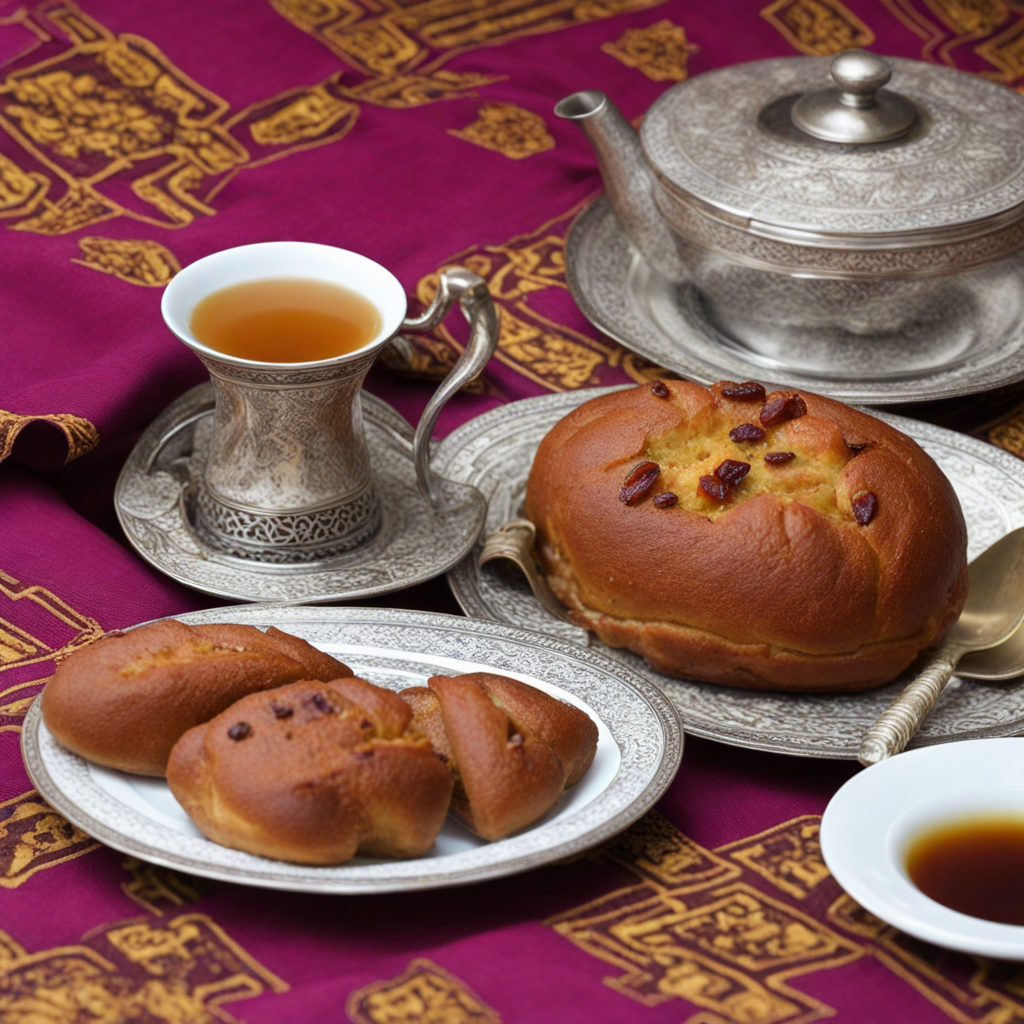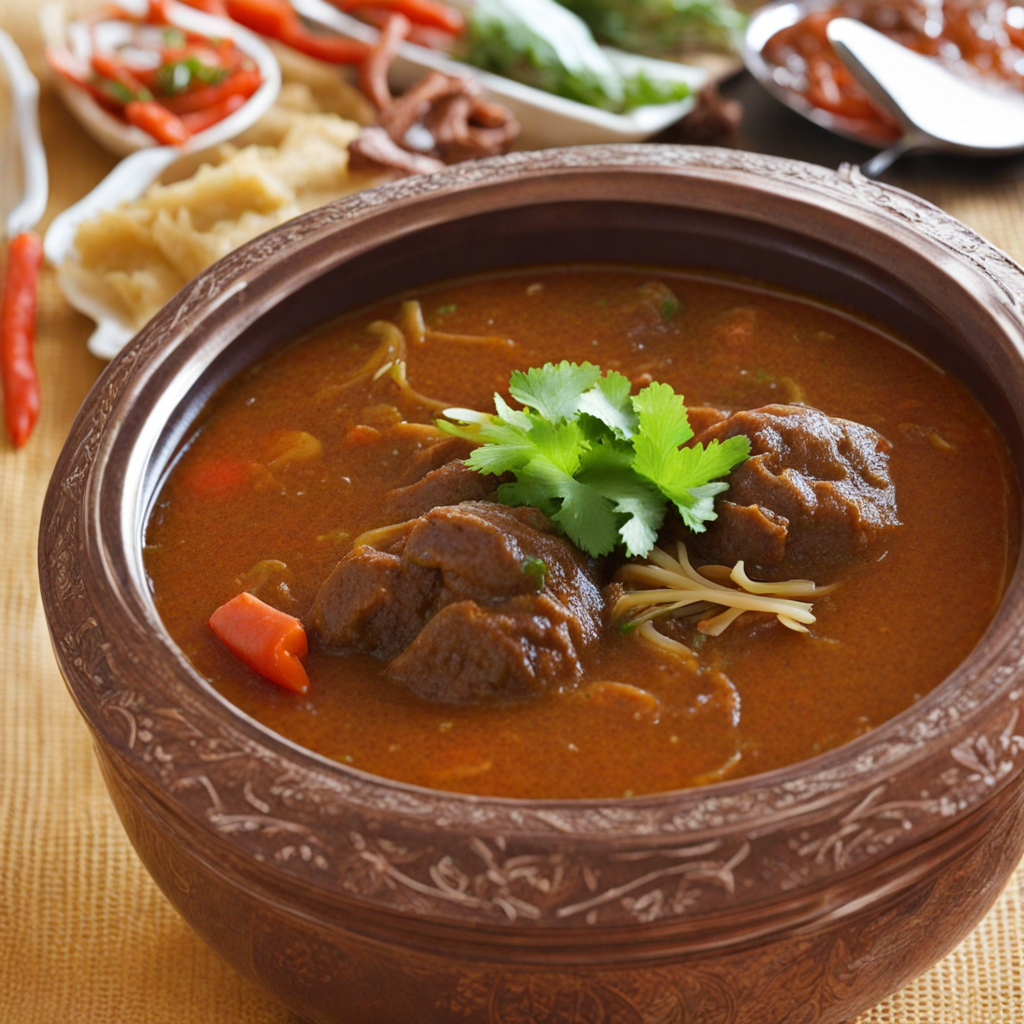Samaki wa kupaka
Samaki wa kupaka is a vibrant and flavorful dish that hails from the coastal regions of Djibouti, showcasing the rich culinary traditions of East Africa. This dish primarily features fresh fish, typically grilled or baked to perfection, allowing the natural flavors of the ocean to shine through. The fish is usually marinated in a delightful blend of spices and herbs, which may include garlic, ginger, and a medley of local spices that impart a warm, aromatic essence. The preparation often involves a zesty coconut sauce, which adds a creamy, luscious texture and a hint of sweetness that complements the savory elements beautifully. As you take your first bite of Samaki wa kupaka, you are greeted with a harmonious balance of flavors. The tender, flaky fish is enveloped in the rich, spiced coconut sauce, creating a delightful contrast that dances on your palate. The dish is often served with a side of rice or flatbread, allowing you to savor every drop of the flavorful sauce. The combination of the ocean's bounty and the earthiness of the spices encapsulates the essence of Djiboutian cuisine, making each mouthful a celebration of culture and tradition. Visually, Samaki wa kupaka is as enticing as it is delicious, with the fish beautifully plated and often garnished with fresh herbs and a sprinkle of lemon juice for added brightness. The colors of the dish, from the golden-brown fish to the creamy white sauce, create an inviting presentation that beckons you to dig in. This dish not only offers a unique taste experience but also serves as a window into the rich culinary heritage of Djibouti, making it a must-try for anyone looking to explore new flavors and cuisines.
How It Became This Dish
The History of سمك وا كوباكا (Samak wa Kubaka) from Djibouti Introduction سمك وا كوباكا, or Samak wa Kubaka, is a cherished dish in Djibouti, a small yet culturally rich country located in the Horn of Africa. This dish, which translates to "fish with koubaka," is not only a staple in Djiboutian cuisine but also serves as a culinary representation of the country's history, cultural exchanges, and the significance of fishing in its economy and social life. To appreciate Samak wa Kubaka fully, it is essential to explore its origins, cultural significance, and its evolution over time. Origins The roots of Samak wa Kubaka can be traced back to the coastal geography of Djibouti, where fishing has long been a vital source of sustenance and livelihood. The country is bordered by the Red Sea and the Gulf of Aden, which provide an abundance of fish. As early as the first millennium BCE, the area was inhabited by various tribes who relied heavily on the sea for food and trade. The Somali, Afar, and Arab cultures that populated this region brought with them a wealth of culinary traditions that would influence the development of local dishes. The word “Samak” means “fish” in Arabic, reflecting the Arab influence in the region due to historical trade routes. “Koubaka,” on the other hand, refers to a sauce made from a blend of spices, tomatoes, and sometimes coconut milk, which showcases the synthesis of different culinary traditions. The melding of local ingredients and cooking techniques with those introduced by traders and colonizers has given rise to distinct flavors that characterize Djiboutian cuisine. Cultural Significance Samak wa Kubaka is not merely a dish; it is a celebration of community and cultural identity in Djibouti. The preparation of this meal often involves family gatherings, where generations come together to share recipes and stories. This communal aspect is crucial in a society that places a high value on familial ties and social cohesion. Moreover, the dish is often served during special occasions, such as weddings, religious festivals, and family reunions, making it a significant part of Djibouti’s culinary heritage. Sharing a meal of Samak wa Kubaka symbolizes hospitality and generosity, reflecting the values of the Djiboutian people. The act of gathering around food fosters connections and strengthens social bonds, making it an integral part of the cultural fabric. Ingredients and Preparation The preparation of Samak wa Kubaka is a testament to the rich biodiversity of the region. The fish used in the dish may vary, but popular choices include snapper, grouper, and even local varieties caught by fishermen. The fish is typically marinated with spices such as cumin, coriander, and chili, which are fundamental to the flavor profile of Djiboutian cuisine. The koubaka sauce, a key component of the dish, is made by sautéing onions, garlic, and tomatoes, with the addition of spices, herbs, and sometimes a splash of lemon juice for acidity. Coconut milk can also be incorporated, adding a creamy texture and a hint of sweetness that balances the spices. The fish is then simmered in this sauce, allowing the flavors to meld together harmoniously. Traditionally, Samak wa Kubaka is served with accompaniments such as rice or injera (a type of sourdough flatbread), allowing diners to savor every bit of the flavorful sauce. The dish’s presentation is often colorful, with garnishes of fresh herbs and slices of lemon, making it visually appealing as well. Development Over Time The evolution of Samak wa Kubaka reflects broader historical changes in Djibouti and the surrounding regions. The arrival of European colonizers in the late 19th century, particularly the French, introduced new ingredients and cooking methods that influenced traditional dishes. While maintaining its core identity, Samak wa Kubaka began to incorporate elements of French cuisine, adding nuances to the flavor palette that are still evident today. In recent decades, globalization has further transformed Djiboutian cuisine. Access to international markets has made a wider variety of fish and spices available, allowing chefs and home cooks to experiment with the dish. Contemporary variations of Samak wa Kubaka may include fusion twists, such as the addition of exotic spices from other parts of Africa or the Middle East, reflecting a modern culinary landscape that values innovation alongside tradition. Additionally, as Djibouti continues to develop as a trade hub, the influence of diverse cultures is evident in its culinary offerings. The dish has gained recognition beyond its borders, with chefs and food enthusiasts celebrating it in international food festivals, showcasing the unique flavors and culinary heritage of Djibouti. Challenges and Preservation Despite its rich history and cultural significance, Samak wa Kubaka, like many traditional dishes, faces challenges in the modern culinary world. The pressures of globalization and urbanization often lead to a decline in traditional cooking methods and the loss of cultural heritage. Younger generations may gravitate toward fast food and international cuisine, which can overshadow the appreciation for local dishes. Efforts to preserve Samak wa Kubaka and other traditional foods are crucial to maintaining Djibouti’s culinary identity. Local organizations, chefs, and food historians are working to document recipes, host cooking workshops, and promote the importance of traditional dishes in schools and communities. By encouraging a sense of pride in their culinary heritage, Djiboutians can ensure that Samak wa Kubaka remains a beloved dish for generations to come. Conclusion Samak wa Kubaka is more than just a dish; it is a symbol of the rich cultural tapestry of Djibouti. With its origins deeply rooted in the coastal geography and historical interactions of various cultures, it embodies the resilience and adaptability of local culinary traditions. As the world becomes more interconnected, preserving and celebrating Samak wa Kubaka offers a way to honor the past while embracing the future. This dish continues to bring people together, fostering connections and celebrating the vibrant culture of Djibouti, making it a true culinary treasure of the Horn of Africa.
You may like
Discover local flavors from Djibouti







